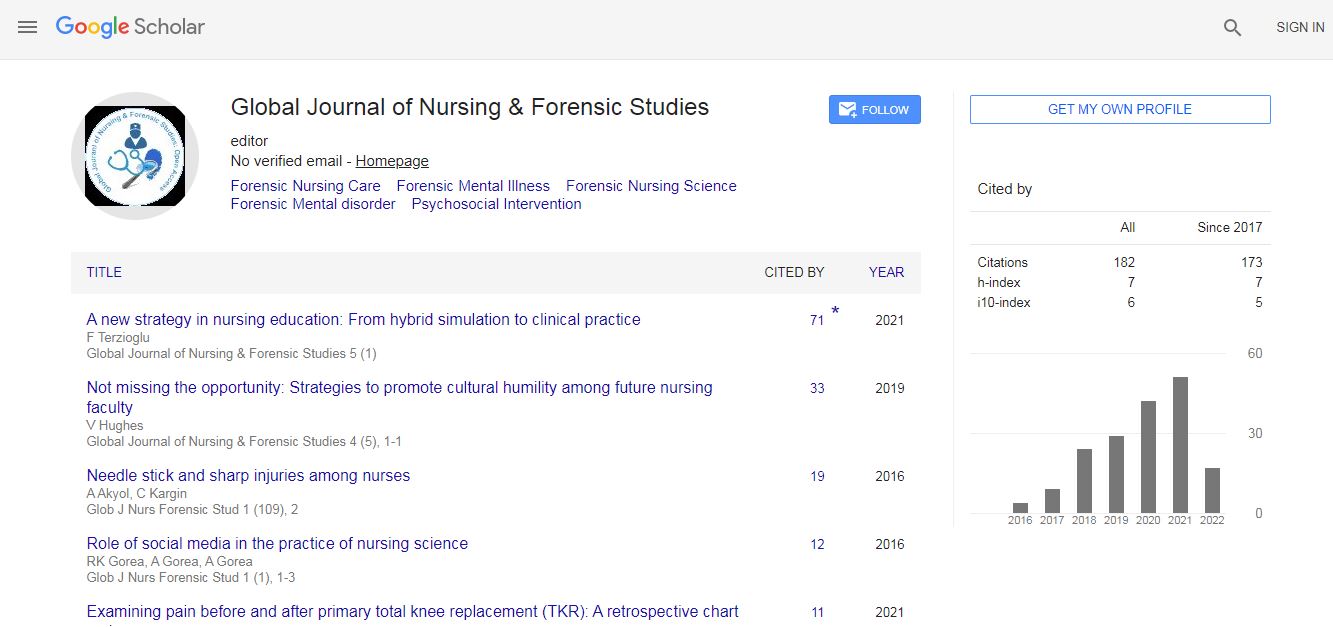Our Group organises 3000+ Global Conferenceseries Events every year across USA, Europe & Asia with support from 1000 more scientific Societies and Publishes 700+ Open Access Journals which contains over 50000 eminent personalities, reputed scientists as editorial board members.
Open Access Journals gaining more Readers and Citations
700 Journals and 15,000,000 Readers Each Journal is getting 25,000+ Readers
Google Scholar citation report
Citations : 82
Optometry: Open Access received 82 citations as per Google Scholar report
Indexed In
- Google Scholar
- RefSeek
- Hamdard University
- EBSCO A-Z
- Euro Pub
- ICMJE
Useful Links
Recommended Journals
Related Subjects
Share This Page
Prevention or delay development of diabetes in women with GDM
5th International Conference on Ophthalmology & Eye Surgery
Lalith Halambarachchige
Ministry of Health, Sri Lanka
ScientificTracks Abstracts: Optom Open Access
Abstract
Introduction: There is a significant risk of developing Type 2-Diabetes (T2DM) in Women With a history of Gestational Diabetes (WWGDM) and evidence-based interventions are recommended to for the prevention or delay of development T2DM. Post-natal period is considered suitable for such interventions. Objective: To describe the knowledge, perceptions and practices of Public Health Midwives (PHM) and post-natal WWGDM and factors associated with provision of post-natal care for women with GDM in selected Medical Officer of Health (MOH) areas in Gampaha District. Methods: A descriptive cross-sectional study was carried out in 2021 in randomly selected nine MOH areas in Gam Paha District. Multistage sampling technique was used to recruit 368 PHMs and 404 WWGDM. Data were collected with a self-administered questionnaire from PHMs on knowledge, perceptions and practices and interviewer administered questionnaire from WWGDM on knowledge and practices; both pre-tested. Data were collected by trained data collectors: Knowledge, perceptions and practices were categorized as good, or poor based on a cut off of 60% on calculated scores. Descriptive statistics and significances were calculated through SPSS software version 21. Results: There were 355 PHMs (response rate of 98%) and 400 women with GDM (response rate of 86%). Of them, 316 (89.0%) PHMs had a good knowledge, 225 (63.4%) good practice and 347 (97.7%) good perception on prevention of T2DM in women with GDM. Among women with GDM, 258 (64.5%) had a good knowledge. 308 (77.0%) poor practices. Age, experience in service, knowledge and perceptions of PHMs were not significantly associated (p>0.05) with good practice. Similarly for women with GDM the age, parity, employment status and postnatal period had no significant association (p>0.05) with their practices. There was a significant association with the knowledge and the practice of the women with GDM (p<0.05). Conclusion: The PHMs knowledge and perceptions were good l however, practices were comparatively poor. Since there is a significant association of knowledge and practices of WWGDM, improvement of their knowledge can produce better practice. Further studies needed to identify the reasons for poor practices among PHMs and conduct awareness programs to enhance knowledge on GDM to WWGDM. Keywords: Gestational diabetes, Post-natal care, Type-2 diabetes.Biography
Lalith Halambarachchige has completed his Diploma in Family medicine from RCGP and MSc from Postgraduate Institute of Medicine University of Colombo. He is the Medical Doctor at Ministry of Health in Sri Lanka.

 Spanish
Spanish  Chinese
Chinese  Russian
Russian  German
German  French
French  Japanese
Japanese  Portuguese
Portuguese  Hindi
Hindi 